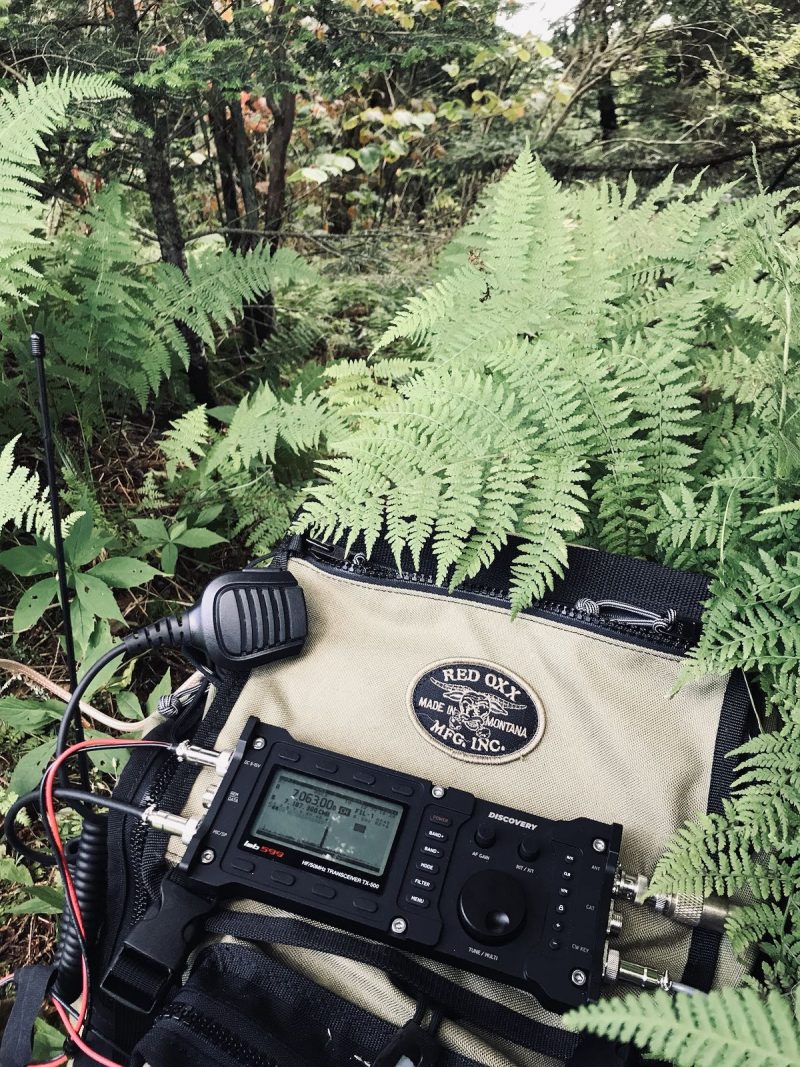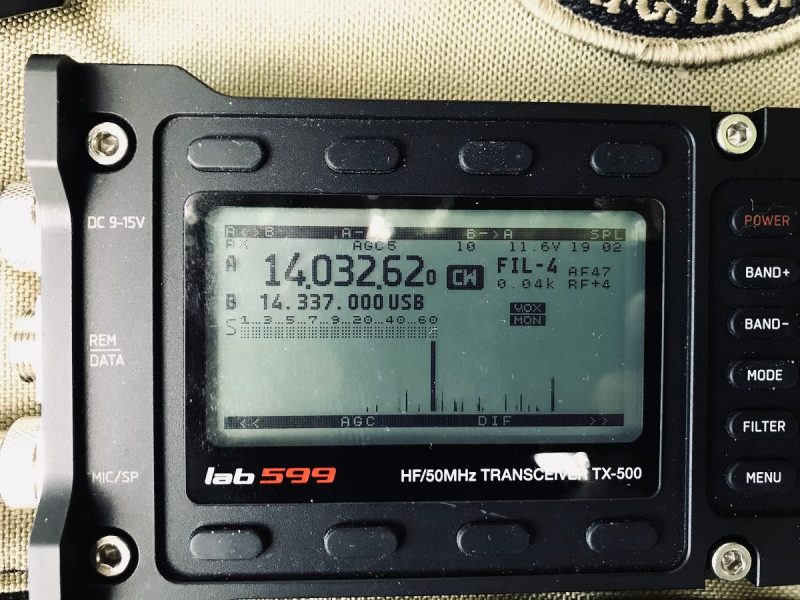So the lab599 Discovery TX-500 I’ve been testing the past week has been sent to Ham Radio Outlet. Over the course of one week, I activated eight parks with this QRP transceiver and if I’m being honest, I miss it already. It’s an awfully fun and incredibly robust field radio.
On my last outing with the TX-500 (last Wednesday) I did an activation of the Blue Ridge Parkway and Nantahala National Forest. I operated CW and SSB and worked stations from Maine to Ontario, Illinois to Iowa, and Louisiana to Florida running 10 watts into my trusty EFT Trail-Friendly antenna.
While I’m evaluating radios I take lots of notes so I can remember detail when writing my review. In the field, I often take short video notes as well.
While finalizing my TX-500 review for the October 2020 issue of The Spectrum Monitor magazine, I rediscovered the following video note. I made this with my iPhone and assumed I might include a link in the TSM article. In the end, though, it was really a journal note for my review.
I thought I’d share it here for those who are considering purchasing the TX-500 and are curious how well the receiver handles dense RF environments. I had the CW filter width set to 100 Hz–had I intended to publish this video I would have likely cycled through various filter settings.
I believe one of the strong points about the TX-500 is its receiver. It has a very low noise floor, great sensitivity, and is obviously capable of handling close-in signals. The CW filters must have sharp skirts. I would love to see what Rob Sherwood’s tests would show (although if he’ll be evaluating one). For a field radio, however, it’s right up there with my Elecraft KX3 and KX2 in terms of selectivity–those two are certainly benchmarks in my book.
Click here to read all of our lab599 Discovery TX-500 posts, videos and field reports.
Do you enjoy the SWLing Post?
Please consider supporting us via Patreon or our Coffee Fund!



Did you get a chance to evaluate the unit on the 0.5-1.6 mhz AM broadcast band.
I presently have a KX3, and it’s performance on the BC is degraded for some reason.
Also, will it have the capability to be modified to operate on MARS frequencies? (I do have a Ham license)
My KX3 is so modified, because it is set up as a portable emergency tranceiver in my bush airplane .
The waterproofing and hardened structure of this unit makes it a potentially attractive replacement for the KX3 in that service.
Thanks
I did have some time to explore the AM broadcast band. It does a fine job–I never compared it with other rigs, but it didn’t seem to overload, the sensitivity was quite good, and audio fidelity great with the AM filter open (even better with headphones, I’m sure). It is much better than the KX3 for sure. I think Elecraft intentionally attenuates the MW band on the KX3.
I’m not sure about MARS frequencies, but I imagine it can.
I think you’ll be quite pleased with the TX-500!
Thomas
Just waiting for the start of backpacking season down here on the Gulf coast. Maybe have the first breeze of cool weather in a month, then I can pull the 817 out and have some fun. In the meantime, it is good to see some backwoods, even if it’s only online. Thanks for the pics and info, Thomas.
While it can’t come close to comparing with Gulf Coast weather, it’s been a particularly hot and humid summer here in the mountains of North Carolina. A couple of recent activations and hikes were pushing 6,000 feet above sea level. Up there, it is starting to feel like fall: cooler temps and a nice breeze. I can’t wait for those days to arrive. indeed, I’m planning more winter activations than I normally do. I mean, we must make the most of social distancing, right? 🙂 No better way than playing radio in the field.
Cheers,
Thomas
Thanks, Thomas!
73. Randy. KS4L